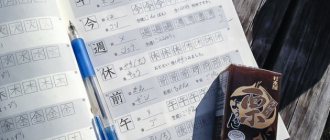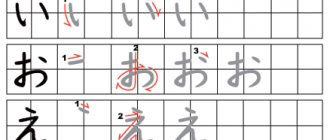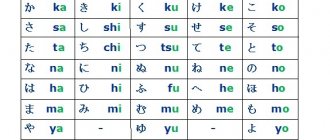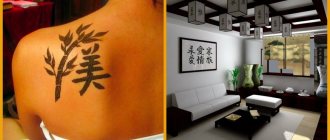Frankly, Japan is a very exciting place. Here you will find an unusual mixture of old traditions and new technologies. You'll also discover stunning natural landscapes just a short train ride away.
From the sparkling, sprawling cities and loud bustling shopping malls, within a short distance you can already see quiet areas full of unique features. Japan is the kind of place where people will wait patiently in line for water after a natural disaster, but don't accidentally offend them, you won't like the consequences. With such a culture and language, it is very difficult to list everything you should know before traveling to Japan.
We could spend hours describing the country's great cuisine, listing the best places to get ramen, sharing all the hidden gems, and explaining the different ways you can accidentally offend someone. For now, though, we're sticking to the basics: everything we think you need to know to make your trip to Japan fun and full of pleasant surprises.
Oh, and hopefully we can help you save some money along the way. Here are 12 things every traveler should know before traveling to Japan.
Bows
The Japanese greet each other with bows. Bows can be either a simple nod of the head or a deep bow - up to 90 degrees. It all depends on the social status of the person you are greeting. For example, if you have to greet some important boss, you should try to make your bow a little deeper and last a little longer. Usually, most foreigners limit themselves to a slight bow of the head, and the vast majority of Japanese do not expect foreigners to know in detail the rules of etiquette regarding bowing, so, without particularly hurting your own pride, just nod your head. Bowing is also a way of thanking and apologizing. Handshakes are not accepted . Do not extend your hand first to shake hands. Of course, you can shake hands if the Japanese himself wants to greet you in the way that is familiar to you.
Lifetime employment
One of the most characteristic phenomena in Japan is the lifetime employment system. It is not customary to change jobs there often. The Japanese come to a certain company after graduating from university and work there until they retire. Many large organizations select promising students and, as it were, “prepare” them for future work. They can help them with various courses and training in their specialty. And then they are accepted into the company, within which these people begin to build their careers.
If it is necessary to select a specialist who will occupy a high position (for example, the position of department manager has become vacant), then, as a rule, the choice is made from those employees who are already working in this organization in lower positions. We often come across vacancies of the type “A large organization requires a general manager, financial director, and so on.” For the Japanese, such a vacancy is nonsense. They will think: “Why hire a person who has never worked in this company before for such a high position, if you can fill it with an employee who was waiting for a promotion and deserved it?”
Shoes
Don't enter a Japanese house wearing shoes. Street shoes are removed at the entrance. True, for our compatriots there is nothing strange in this - we do the same thing - but for Americans and Europeans it can be difficult to get used to this. Continuation of this rule: do not step on the tatami wearing any shoes at all, not even house slippers. This is the strictest rule of all. For all their tolerance for the oddities of foreigners, the Japanese will not make exceptions for you.
Eyes to eyes
We have heard the point of view more than once that the Japanese do not like open eye contact. If you try to catch the eye of a Japanese person during a conversation, he becomes embarrassed and shows a desire to end the conversation quickly. Although sometimes the Japanese themselves say that if a person doesn’t look you in the eye, it means he’s hiding something... And yet, in most cases, the Japanese communicate with each other without meeting their eyes. For the Japanese, looking intently into the eyes of your interlocutor is in some sense indecent and means aggressive behavior. When Japanese parents scold their children and the child looks them in the eyes, they especially focus on this, saying: “Well, why are your eyes wide open!!!” Because of this, Japanese children often stand with their eyes downcast when they are scolded. In Russia, on the contrary, at the moment when adults are angry, and children stand and listen to them with their eyes downcast, parents will definitely say: “Why don’t you look me in the eye, probably because you are guilty!!!” The explanation for this unusual custom takes us to medieval Japan, in whose life everything was strictly regulated. For example, looking into the eyes of a person with a higher social status was considered simply arrogance, and in those days one could easily pay with one’s life for such an act. Of course, that social structure became a thing of the past with the end of the Edo era, but it left a deep mark on the psychology of the Japanese right up to the present day. Apparently, this is why the Japanese subconsciously try to avoid making eye contact with their interlocutor . We would not classify “looking into the eyes” as an unambiguous prohibition, but, on the other hand, this should be remembered.
The worst thing for any self-respecting Japanese is to cause inconvenience to strangers.
Manners and social rules are not universal, and it is easy to make mistakes if you do not know other people's customs. The Japanese are relatively reserved and polite, so you probably won't even realize you're insulting anyone - but they will notice and draw conclusions.
An important part of enriching travel is learning about other cultures and ways of life.
We invite you to plunge into the most important rules of etiquette in the land of the rising sun!
1. Don't wear shoes indoors
You must remove your shoes before entering the house. This is a reasonable and hygienic requirement. They simply don't want dust and dirt blowing across their clean floors and tatami mats. Most houses and apartments have a small recessed vestibule, called a genkan, where you need to take off your shoes and put on slippers (separate slippers are often provided for guests). Please note that these slippers are also removed upon entering the tatami room, leaving only socks on.
2. The toilet room also needs separate slippers.
The fastidious Japanese have a special set of slippers for the toilet. They are often embellished with a word or picture so you don't get confused. Just change from house slippers to toilet slippers, do your dirty work, then change back before you leave. Sounds simple, right? But probably at some point during your trip you will forget to do this and you will be “caught” wearing slippers or even toilet shoes in a restaurant. Don't worry, most Japanese people are pretty good-natured about this cultural difference (you're a barbarian to them). This will be considered cute fun rather than serious rudeness.
3. The tradition of queuing for a public toilet
In our “Western” world, we usually form a queue for a public toilet according to the principle: “first come, first served, then next in line.” The Japanese queuing system for the toilet is slightly different. Every Japanese person goes to any random booth, using it whenever it becomes available, regardless of whether anyone else has been waiting longer. This may seem like a sign of bad manners. , but in fact this is the norm for Japanese society. Weirdness? Even some!
4. Ultra-modern toilets and those without toilet paper
The toilet theme is very important in Japan! This is not just a toilet - it is a high-tech miracle throne, with a control panel of buttons that, for example, warm up the seat, wash an interesting place, dry this place, draw out the smell, play a melody and even turn on sounds distracting from your intimate process.
Particularly cool models measure your blood pressure and analyze your diet. However, at some point during your trip, you'll likely encounter a traditional, squat Asian toilet with a hole in the ground. Please note: Traditional toilets usually do not provide toilet paper, so always have a pack of tissues in your pocket.
5. Don't take a bath dirty
It may seem counterintuitive, but bathing in Japan is not about cleansing the body. Those deep ofuro bathtubs you'll see are designed for relaxation and calming after you've already soaped up and cleaned up in the free-standing shower. If there is no separate shower, then first they wash themselves in the bathroom, then flush the water and relax, now clean. Interestingly, several people can bathe in the same hot water, so it is better to be already clean before plunging into a shared bath. This is a blissfully relaxing procedure, and not a routine wash, as some white barbarians from the West (foreigners) think.
6. Don't drink or eat on the go
While in America and Europe it is completely normal to walk around with coffee, ice cream and fast food, the Japanese prefer to stop and have a snack in a relaxed environment. Perhaps this has something to do with their cultural respect for food, often eating with the prayer Itadakimasu, which means “I humbly receive.” Or maybe it has to do with not wanting to get your clothes dirty. Whatever the reason, you won't see people sipping coffee or snacking while walking the streets of Japan.
7. Don't put soy sauce on rice
In Japan, rice is a staple and small bowls of the sticky white grain are served for breakfast, lunch and dinner. However, contrary to Western tastes, the Japanese do not pour soy sauce directly onto rice. You will be looked at as a barbarian if you put salty soy sauce on your rice. What should we take from you stupid Europeans? Rice is meant to balance the flavors of other dishes on the table. If you want, you can dip a piece of rice in soy sauce or other sauce, lightly moistening it. But don't pour it directly! You can add soy sauce on top of tofu, but not on rice.
8. Don't overuse chopsticks
Before you go to Japan, learn how to use chopsticks (o-hashi). It's really not that difficult, if you practice you might even be praised by the locals for your skills as if it were some great feat. But chopsticks also want respect and also have their own etiquette.
- don't wave them over your food,
- Don't play around with them, don't use them as drumsticks, and don't fight with them like swords.
- don't point at people with them.
- Always use two chopsticks; do not pierce food with one chopstick.
- never stick them vertically into a bowl of rice
- Do not pass food with chopsticks to another person - this is akin to funeral rituals and will be considered very rude.
- You should also not use chopsticks to pull the dish towards you
- do not lick or bite the ends of the chopsticks
- don't cross them in an "X" shape, don't put them on the plate like a bridge.
- when you finish eating, just place the chopsticks in front of you on the left
9. Don’t be afraid to slurp, slurp, and burp.
Go to the bathroom, which means only clean, you can’t make noise in public places, but you can behave like pigs!? Take note of some Japanese table manners. Foreign visitors may be shocked to hear locals eat as depicted in comical Soviet posters. They will loudly sip, swallow, smack, suck, chew, gnaw and even burp loudly while eating. This is considered a polite sign that they are enjoying the meal. It seems that the louder, the more praise for the cook!
10. Don't pour your own alcohol.
Alcohol is an important part of communication in Japan, of course there is also a certain custom here: the glasses of colleagues and friends must be constantly filled. This means that guests will be constantly refilled with alcohol, so be careful to keep track of how much you drink! Don't forget to take care of those around you. The most polite and honorable way is to pour with both hands. Kampai!
11. Don't leave a tip.
Tipping is not mandatory in Japan; in fact, it may be perceived as an insult if you try to give them your dollar. Service workers such as waiters, taxi drivers and hairdressers are paid well for their work and do not expect any additional payments from their customers. Save yourself the embarrassment and forget about tipping in Japan.
12. Stop spreading germs
Sick? Stay at home if you are just like a vegetable or wear a medical mask! The Japanese are very careful when it comes to getting sick in public. Many people wear protective surgical masks if they know they have a cold. This can be seen very often on the streets and in the subway. This may seem a little extreme, but in such a densely populated country, it's best not to cough or sneeze your germs into the populace. By the way, another thing you shouldn't do in Japan is blow your nose in public. Either wipe your nose in private, or be discreet by sneakily wiping your nose when no one is looking. Yes, despite the fact that burping and slurping is normal...
13. Don't point at your chest when saying "I"
Sign language differs greatly from country to country. For example, a gesture denoting the concept of "I", white people will show how to point to themselves, usually to the chest area. A Japanese will point to his nose while saying "I". This may look a little unusual, but this is the tradition of Japanese sign language.
14. Avoid the number four
Four is a very superstitious number in Japan, somewhat similar to the unlucky number 13. The number four is pronounced "shi" in Japanese, which has the same sound as the word for "death". There is actually an alternative pronunciation for this number, "yon", so you can try to avoid such unfortunate additional meanings. In Japan, you often skip the fourth number of a floor, room, or even building. Nine is another unlucky number in Japan that they try to avoid because "kyu" - nine - sounds like their word for torture or suffering. I wonder what a Japanese man does when he is 44 or 49, for example!?
15. Don't talk on your cell phone
Japan is one of the most populous countries in the world and has at least 90% mobile device penetration. You might think that they will be chatting on their cell phones or looking at smartphone screens all day. However, it is not. While almost everyone has a smartphone, there are some socially agreed upon etiquette rules for public conversation. The Japanese believe that the group is more important than the individual, so talking loudly means disturbing others. They consider it rude to talk loudly on the phone on the streets, on trains, buses and other public places in Japan. Also, a sign of bad manners will be a loud ringing on the phone, you will be asked to switch the phone to “vibrate”, especially in quiet or public places, such as hotel lobbies or restaurants.
16. Don't touch people
Unlike Europe or Latin America, where casual acquaintances are greeted with hugs and kisses, Japan is more reserved in its public displays of affection. You almost never see people holding hands, walking hand in hand, or kissing on the streets. Even those who are madly in love will remain modest in public. Don't expect any physical contact when saying hello or goodbye, even to close friends in Japan. You'll just make them feel awkward by accepting your big bear hug or your goodbye smile at the train station. For colleagues or respected people in the social hierarchy, it is always best to stick to a formal bow as a greeting.
17. Saying “YES” is not necessary, just agreeing.
You will often hear Japanese people say “hi” when you talk to them. Although it translates to “yes”, it is more of an expression of “I hear you”, “I am listening”, or our usual “aha/uh-huh” when we say, indicating that we are listening, rather than thinking about our own. This does not mean that the other person agreed with what you are saying. It should be noted that the Japanese also rarely use a clear “no” when negotiating. This is considered too direct and confrontational. They prefer to substitute a more subtle "we'll try our best," "let's see what" or "that might be difficult," which allows for a polite refusal. Therefore, all this ambiguity often causes great confusion in negotiations between East and West.
18. Don't litter in Japan
For such a populous country, it's amazing how little trash you see on the streets. This is doubly interesting because there are very few trash cans on the streets. Where does all this garbage go? Believe it or not, people often keep their trash to themselves until they get home. Or they wait until they get to the official waste repository, where they are greeted with a variety of recycling options, depending on what exactly they are throwing away. Japan has always been ahead of the curve when it comes to recycling (77% recycling rate compared to 20% in America). From a young age, children in Japan are taught not to throw garbage on the ground. Of all the things not to do in Japan, this is an impressive cultural custom that we should follow. But even at home, the Japanese separate the garbage. If you have a champagne bottle, then you must separately remove and lay out the cork, metal wire and glass itself.
19. You can’t just throw away an old cabinet, TV or other large garbage.
By the way, large-sized garbage cannot simply be thrown away like ours and taken to the trash. You need to buy a special sticker (like a stamp on an envelope, depending on the country of the recipient), for electronics there is one payment, and for old furniture another. And take it to a strictly defined day for the removal of bulky waste. Otherwise, the fines are not small.
20. Having a car in Japan is a huge responsibility.
The level of motorization in Japan is one of the highest in the world - almost 50 percent of the total population. It is interesting that you can drive from the age of 18, and the age of majority in Japan comes at 20. But it is not at all necessary to go to a driving school, although most citizens still do this, since in this case you can only get by with a written exam and not take driving. A driving school course costs 3-4 thousand dollars. Almost everyone who graduates from a driving school passes the exam the first time. According to statistics, about 7 years pass between obtaining a license and buying a car. In Japan, you can't just save money and buy a car. To buy a personal car, a Japanese will have to prove that he will be able to use it without causing inconvenience to others.
Due to this fact, one of the main requirements will be the possession of a personal parking space located within a radius of no more than 2 km. from the house. A parking space is often rented rather than purchased. The price is approximately the same as a one-room apartment in the same area... The Japanese treat this requirement with great understanding.
But a cunning state cannot be fooled! It is not only the availability of a parking space that is important, but also its size. When you submit documents to the police, you must provide a drawing of your parking lot. The police may not allow you to buy a brand new SUV if they think your parking lot is too small for it.
All parking lots in the courtyards are marked and near each parking space there is a sign with the name of the owner of the space. You can’t just put your cart in someone else’s place.
21. Don't take drugs
Japan takes its drug laws very seriously. If you are caught with even a small amount of marijuana or another illegal drug, you will be subject to hefty fines and possibly even jail time. They have a zero-tolerance policy and if you're a foreigner there will be no mercy - just read about the stories of Paul McCartney and Paris Hilton. It is interesting that the Yakuza, traditionally engaged in racketeering not as a gop-stop, but in subtle protection and illegal services, also began to trade in drugs. Because of this, they often began to get caught in this matter or were simply frankly stubborn. The heads of the Yakuza clans forbade all their subordinates to engage in any type of drugs. Do they follow this rule? Not known. But there have been noticeably fewer criminal cases involving Yakuza bandits.
22. Are you allowed to live with pets?
Japan has very strict laws regarding keeping pets. You can’t just go to your friends and take a kitten from them. Or, while walking along the Japanese streets, pick up a stray dog and bring it to your home. It matters what kind of apartment you live in. There are two types of apartment buildings in Japan:
- You cannot have pets - the usual cost of the apartment;
- You can keep pets - 30% more expensive than the previous type.
You can, of course, bring a cat and not tell anyone about it, but, again, if the homeowner finds out about such a violation, then you will have to get rid of the pet and pay a very significant fine. So it’s best not to take risks and do everything according to the letter of the law. They won’t let you take your dog out onto the street; you’ll have to hand it over to the shelter at your own expense.
If you live in a private house, then have anyone you want without asking or permission.
Place in transport
On the subway, bus and train, no one gives up their seat to anyone - regardless of age and gender. Even if a grandmother enters the carriage - “God’s dandelion”, barely moving her feet, no one, naturally, will move. If you still give up your seat out of pity, then it is quite possible that you will find yourself in a comical situation when this same grandmother, desperately working with her little hands and pushing aside passengers, will follow you and will thank, thank and thank, as if you had done something for her something like that, out of the ordinary. So if you take a seat on a Japanese bus or subway, then sit as long as you like, no matter what ancient old people surround you. Just be careful not to take up a seat for the disabled that is available in subway cars. No one except the elderly and disabled can sit in these seats. You can identify a seat for the disabled by a special pictogram above the seat.
Toilet and slippers
Don't forget that you wear special slippers in the toilet . These slippers stand at the door to the toilet, where you take off the slippers you wear in the house and put on the slippers you wear when you go to the toilet. You take them off there when leaving the toilet. Don't forget to take them off! Otherwise - although the difference will not be at all noticeable to you - before the surrounding Japanese you will appear in the role of the most cartoonishly stupid foreigner. True, no one will scold you, but they will have a lot of fun at your expense.
Handkerchief
Don't use a handkerchief. The Japanese use thin paper napkins, which we advise you to do too, especially since these paper napkins are distributed completely free of charge at every intersection. In general, it is better not to blow your nose in public at all. According to the rules of good manners, if you have a runny nose, you should sniff until you are alone with yourself, and only then blow your nose. Just don't think this is a joke! The Japanese really do just that. Out of habit, by the way, snooping around is very annoying, but, as you know, you don’t go to someone else’s monastery with your own rules.
About eating with chopsticks
A little about eating with chopsticks. Do not stick chopsticks into food, do not use them to push the plate, do not pass anything “from chopsticks to chopsticks,” and in general, two people should not touch the same piece with chopsticks at the same time. These rules must be strictly followed. In addition to the fact that the listed actions are bad form, they are also a bad omen (in fact, that is why they became bad form). For example, food is passed “from sticks to sticks” at a funeral. Another thing to note: Japanese dishes are often not just food, but small works of art, so treat them as such. Do not stir food with chopsticks or pour soy sauce on everything. This is not the worst crime against etiquette, but still...
At the table
Start of the meal
Before the start of lunch (according to the classical canons), a damp hot towel is served to clean the hands and face - “oshibori”. But if you eat at a regular restaurant, there may not be oshibori.
But wherever you eat, before you start eating, you need to say “Itadakimasu” (I accept this food with gratitude). This is instead of "bon appetit."
As for the sequence of dishes (again, in a traditional lunch), you should first try the rice, then the soup, and only then try any other dishes.
Sticks
Khasi are traditional chopsticks. Hasioki is a stand for them. The ability to use chopsticks correctly is an indicator of a person’s culture.
There are a number of strict taboos against the Khasis. Read more about this in the material “How not to use chopsticks.” [new_royalslider id=”94"]
Toasts
"Kanpai!" - this is what the Japanese say, raising a glass of sake (or other alcohol) and clinking glasses. Translated, this means “Drink to the bottom!”
But drinking to the bottom is dangerous. As soon as the pourer sees an empty glass, he will immediately fill it. By the way, if you pour the drinks, then fill your glass last.
End of the meal
It is bad form to leave the table silently. You must definitely thank the one who fed you (the owners of the house, the chef of the restaurant), even if he does not hear you. To do this you need to say “Gochisosama”.
A couple more tips
- Don't be surprised by loud smacking at the table - this is how the Japanese express pleasure from food.
- Don't try to tip - it's not accepted.
Bathhouse, bathroom
Do not get into a shared bath while soapy - o-furo. You are supposed to wash in the shower, and the o-furo already clean to soak in the hot water. The bathtub is filled once per evening for the whole family or for hotel guests - so don't pull the plug when you get out! If you live in a Japanese family , then you, as a guest, will definitely be allowed into the bath first, for which you should be grateful when you leave.
Tatami etiquette
If you are in a traditional Japanese room, remember: there is only one correct posture for sitting on a tatami (in Japanese it is called seiza , “correct posture”). This is when you sit on your knees with your legs underneath you. Men - only men (!) - can sit cross-legged, but only in a less formal setting. You can also move your legs to the side. Yes, sitting in seiza threatens to turn into torture for an unprepared foreigner. Most likely, your hosts will understand this and will try to take care of you - they will allow you to sit in a more free position or offer you a small bench. However, remember: on the tatami and you cannot stretch your legs in front of you - especially if in this case the toes of your feet will point towards someone present (the toe of your foot is literally the lowest part of your body, and point it insulting to a person). More about “tatami etiquette” . If you know that you will be in a traditional Japanese room (especially if what happens in it will have to do with traditional Japanese arts), be respectful of tradition and try to dress accordingly. This means no jeans, shorts, super minis. Women are strongly advised to wear a sufficiently long skirt. No bare feet - only socks, preferably white (more like traditional Japanese tabi ). The Japanese will most likely not tell you about this, but rest assured, they will appreciate the appropriateness or inappropriateness of your clothing.
Magic words
Addressing your interlocutor
Nihongo no keisho are noun suffixes used in communication and added to a person's first name, last name, or profession. They indicate the degree of closeness of the interlocutors and the social connections between them. Addressing without a suffix is rude. It is permissible only in communication between schoolchildren, students and close friends, as well as when an adult addresses a child.
Basic nihongo no keisho:
- -san - used in communication between people of equal social status, younger to older, as well as unfamiliar people, to show discreet respect (something like our “You”);
- -kun – used in informal communication between colleagues, friends, as well as to address a senior to a junior (a boss to a subordinate);
- -chan - used in close communication between people of equal social status and age, as well as as an address to children (something like diminutive forms in Russian);
- -sama – used to express extreme respect, usually in official letters (something like “sir”);
- -senpai - used when a younger person addresses an older person (teacher - student, less experienced employee - more experienced);
- -kohai – reverse “-senpai”;
- -sensei – used when addressing scientists, doctors, writers, politicians and other persons respected in society.
Hello!
Greetings are an important part of Japanese culture. Most often it is expressed by bowing (more on this a little later), but the following words are also used:
- Ohayo gozaimasu - good morning.
- Konnichiwa - good afternoon.
- Kombanwa - good evening.
- Hisashiburi desu - long time no see.
Such informal variants as “Ossu”, “Yahho!”, “Ooi!” are also used. (in a male company).
Goodbye!
To say goodbye, in Japan they say:
- Sayonara - goodbye.
- Matane - bye, see you.
- Oyasumi nasai or simply oyasumi - good night.
Thank you
People in Japan say thank you like this:
- Domo - thank you.
- Domo arigato – thank you very much.
- Domo arigato gozaimas – thank you very much.
Please
And they respond to kindness like this:
- Doitashimasite – no need for gratitude.
- Kotirakoso - thank you.
- Otsukare sama – great job.
Requests
To ask for help, you need to say “onegai” or “kudasai”. But in Japan it is not customary to ask (only in the most extreme cases). Therefore, refusing help is not rudeness, but, on the contrary, a sign of respect. You can only accept someone’s support when the person expresses their willingness to help several times in a row.
Apologies
Common words of apology are “Gomen nasai” and “Sumimasen”. The latter is translated literally as “there is no forgiveness for me” and is used very often. This is how the Japanese show how much they respect their interlocutor who has been inconvenienced in some way.
Don't touch with your hands!
Don't touch the Japanese with your hands! Don’t try to hug them when you meet them, don’t pat them on the shoulder, don’t touch them at all. The only physical contact allowed is a handshake, and even then it is better to wait until the Japanese himself extends his hand to you. Otherwise, limit yourself to bowing. The Japanese communicate with each other at a distance. Of course, this does not apply to family members or couples, but until you develop such a close relationship with the Japanese, it is better to be reserved and respect other people's space.
Present
In Japan, unlike Russia, it is not customary to immediately unwrap gifts that are given to you. The implication is that this is a manifestation of excessive curiosity or greed. In addition, in this way you can make the giver feel ashamed of his modest gift. Such is Japanese delicacy . In Japan - as well as abroad in general - it is customary to give gifts wrapped in wrapping paper. And if all over the world, taking care of the environment, multilayer packaging is abandoned, then in Japan they still strive to wrap everything and everyone as intricately as possible. Traditionally in Japan, gifts were wrapped in white paper and the package was tied with red and white ribbons, which were tied in an intricate knot. Now, of course, it is not necessary to follow this tradition, although you can see such packaging quite often.
Learn a few phrases and learn how to recognize keywords.
We always recommend learning a few basic phrases in the local language when you travel. But this is especially important in Japan, where etiquette is most respected and in demand. Make sure you are familiar with the proper ways to say “thank you,” “please,” and “sorry.”
Even if you need to write them phonetically. You may also want to write down a few translations for your personal needs, including words for bathroom, ramen, karaoke, going out (trust us), and some toiletries.
Business Cards
Carry business cards with you. This, of course, primarily concerns those who plan to work in Japan, but in general it would be good for everyone to remember this. A business card delivered to the right person at the right time can work wonders. If you don’t have business cards with you, then for the Japanese it looks at least strange. As already mentioned, the use of business cards is not limited to business circles - even students often have them. When a business card is handed to you, you need to take it with both hands, examine it and only then hide it. Don’t just stuff it into your pocket as if you don’t care deeply about what’s written on it. And even more so, do not write anything on the business card that was handed to you.
Money rules.
Cash rules in Japan. Workers are usually paid in cash, and most businesses and services, including restaurants and stores, only accept cash. Your hotel and some large department stores will usually accept cards, but always check for cash first.
So make sure you always have plenty of yen in your wallet to avoid awkward conversations that can easily get lost in translation. Tip: If you find yourself without money, go to 7-Eleven to use the ATM. Not only is your bank card guaranteed to work every time, but it's also open 24/7.
In a Japanese house
The Japanese rarely invite guests to their home, not because of a lack of hospitality, but, as a rule, because of the lack of free space in which to comfortably receive guests. Therefore, if you are lucky and are invited to a Japanese home, take note of several points of Japanese etiquette regarding visiting and behavior in a Japanese home . When entering a Japanese home , say hello, bow, take off your shoes in the hallway /' genkan '/ and put on the slippers offered to you. It is not customary to arrive empty-handed. Be sure to take a small souvenir with you (a bottle of wine or whiskey, caviar, or a traditional souvenir from your country would be a good gift. It is not customary to give flowers, knives, or combs) and hand it over as soon as you enter the house. Even if the interior of a Japanese house is decorated in a European style, there will definitely be at least one room in a traditional Japanese style with an alcove /' tokonoma '/, decorations in it - ikebana and a bundle painting / ' kakemono '/, and a floor covered straw mats “tatami” measuring 180 x 90 cm each. Before entering this room, it is customary to remove slippers so as not to damage the material from which the tatami .
Business conversation
The Japanese know a lot about business. To earn the trust and respect of Japanese partners, you need to know several basic rules of national business etiquette.
Lateness
The Japanese are never late. Making a Japanese wait is disrespectful. It's better to arrive early for a meeting than to be late.
No!
Hearing a direct refusal from a Japanese businessman is nonsense.
The Japanese don't say "No".
Even if they are not completely satisfied with the terms of the deal. Instead, the Japanese will nod and give abstract, evasive answers (“We’ll think about it,” “It’s difficult,” etc.). The origins of this behavior are in “timmoku” (the Japanese art of silence) - it is better to remain silent than to offend a person with a refusal.
If the deal completely suits the Japanese, you will hear a clear and unambiguous “Yes”.
Business cards
The exchange of business cards is an important ceremony in Japanese business communication. Firstly, a business card is a kind of cheat sheet (the Japanese have difficulty with European names, just like we have Japanese ones). Secondly, the position is indicated on the business card, which allows you to choose the right course of action. Thirdly, it is a sign of respect from your partner.
A business card, like a gift, is handed over with both hands.
Business cards are exchanged at the first meeting during the greeting. They are passed and received like a gift, with both hands. The business card should be neat, printed on good paper, the text should be written in (at least) two languages – Japanese and English.
If you go to a foreign country, follow its customs. Japanese proverb
Japanese etiquette is complex and sometimes incomprehensible. The above is just the tip of the iceberg. If you know other secrets of Japanese etiquette, share them in the comments.











